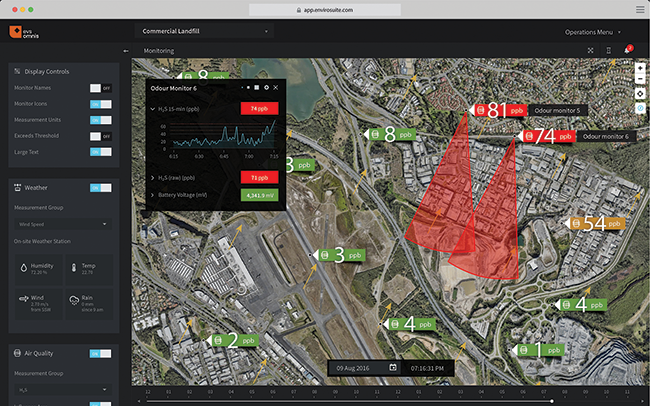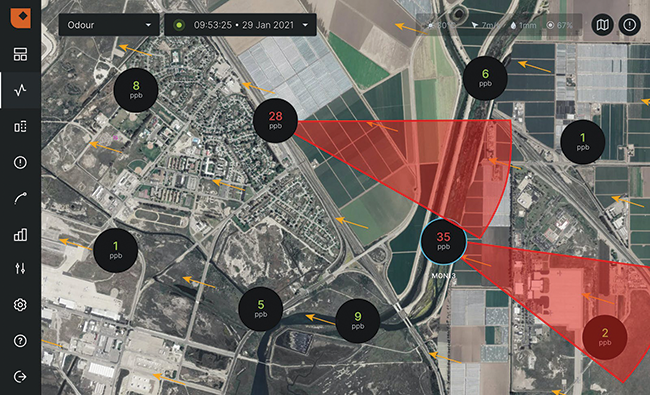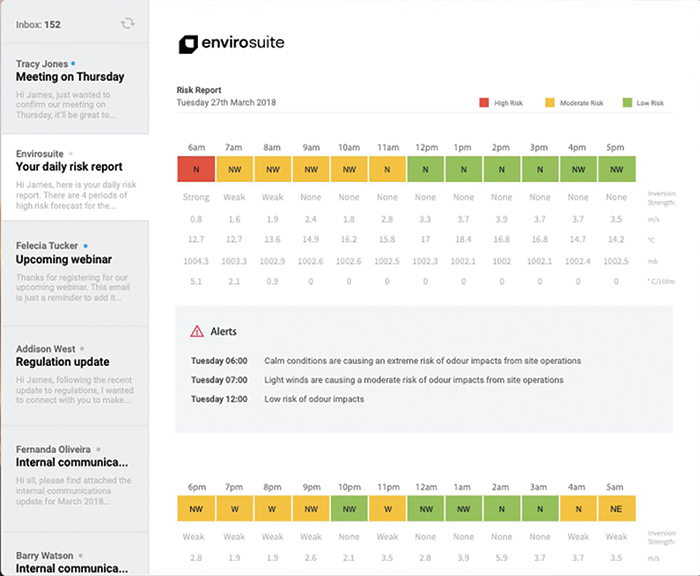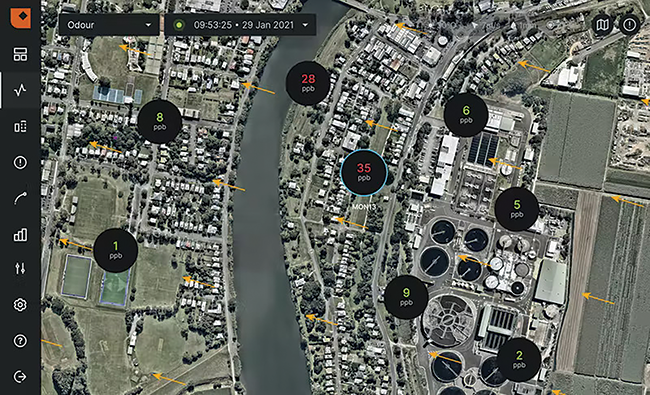As residential areas encroach and the specter of land conflicts arise, waste management operators are building trust and renewing their social license to operate.
By Alex Zamudio
The world’s megacities are expanding. Urban-ization is engulfing city fringes with challenging urban planning decisions made years or decades ago, and landfill operators are bearing much of the brunt. According to the UN, the proportion of the global urban population is expected to rise from 46.6 percent in 2000 to 58.2 percent in 2025 and 66.4 percent by 2050.
Impact on Urban Liveability
New arrivals to the city fringes come with chasing open spaces and liveability, but their moves are bringing them in closer contact with waste management sites, and this is increasingly a cause of community conflict. Environmental impact from waste management sites affects urban liveability. It is the reason for many complaints made to environmental authorities and “ill will” in communities, with landfills often listed as the top source.
Even one complaint directed at a site can lead to significant issues for operators; however, sites with odor issues can generate hundreds of complaints per month. These complaints are often supported by a range of external data, from odor diaries and sniff tests to formal air quality monitoring systems set up by investigators.
Communities are increasingly impatient about slow and indecisive responses to odor complaints, so it is more important than ever that operators can minimize uncertainty and reduce the time between a problem occurring and a solution being actioned.
Air quality and odor emissions are still a challenge for waste management operators today despite a wide range of abatement options. Lack of knowledge about when to engage critical controls can lead to impacts on nearby communities, which creates costly investigations and disruptions from lawsuits and fines. Outside factors such as meteorological conditions play a part in management approaches and need to be modeled with internal data to make abatement and control measures effective.


Environmental Justice Issues
Employing environmental modeling capabilities and effective odor control best practice solutions is critical to avoiding negative attention and fines. However, more importantly, at a time of heightened awareness and sensitivity to climate and sustainability, it is about demonstrating a commitment to social and environmental responsibility, and to keeping communities onside.
People are decentralizing, environmental justice laws are passing, and landfills are becoming part of the city’s sprawl. As the nature of work changes, people are expanding their horizons. Where they once lived close to a physical workplace, they can now live much farther away from the city center where there is more space. As outer-metropolitan perimeters are extended, residential populations are brought into closer proximity to previously isolated waste and industrial facilities. Once in the middle of nowhere, more landfills now have residential premises near their boundaries, and some will eventually be ringed by new developments. As communities form, they have high expectations of their neighbors.
The passing of environmental justice (EJ) laws both in the U.S. and in other countries also brings increased oversight on existing industrial facilities in locations identified as ‘overburdened communities.’ EJ laws can subject facilities to closures or even permit denials if they are found to be producing negative impacts to human health and the environment. For waste operations, this can be focused on operational odors and community complaints.

Landfills are Already on Borrowed Time
Residential areas are encroaching landfill sites decades after these facilities were approved. Original permits were granted, and conditions set based on minimal residential growth in the area. Permits vary between jurisdictions, states, or countries, and were designed for a point-in-time policy position and are often pegged to minimum regulated environmental standards. However, the world has changed since these permits were issued. Expanding existing facilities or building new ones requires much higher standards to be met. As communities draw near, they bring quality-of-life expectations with them. Legacy permit holders are under community pressure to modernize.
External researchers are also pouring into the space to pore over these issues. A recent study from Canada found locations for waste transfer stations are sensitive to increased population density. Researchers are using geographic information system (GIS), census, and satellite data to assess the suitability of locations for solid waste management. Operators are countering with their own use of environmental intelligence and—in some cases—‘digital twins’ of their environments for scenario modelling.
Air Quality Concerns are Mainstream
Smoke from forest fires in North America and Australia, ‘yellow sand’ in East Asia, harmful levels of air pollution in Europe—all have made air quality a concern for citizens globally. Weather forecasts in many parts of the world show air quality index measures. Government authorities also offer their own measurements and historical data.
As city sprawl envelopes waste management centers and industrial sites, the latter’s influence on local air quality faces increased scrutiny. In the middle of nowhere, without a community nearby, there is less pressure to address temporary elevated odor levels. Newfound proximity to communities means change is necessary to avoid a collision course with the community.
Residential encroachment of landfills has been an issue since at least the 1970s. Not all communities historically reported ill-effects from close proximity, though it is clear the experience is far from uniform. As one resident in 1977 said, “I never thought anything about what they do with garbage before I moved here. Now I think I’ve learned more about it than anyone would ever want to know.”
Fifty years on, the situation is far different. Prospective residents can research suburbs on the Internet and instantly find rankings, positives, negatives, and reviews. The existence and location of any landfill is no secret, nor is its track record on odor control and addressing local complaints.

Rewriting the Rules for Co-Existence
Innovative recycling programs and technologies are helping to increase profitability of waste sites while extending their operational life. ‘Circular economies’ are now at the center of most waste management programs. However, the truth is that waste management remains a critical service for communities to function. Communities are redefining their relationship with waste. There is a greater awareness for how much waste individuals produce, and how much of it is—or can be—diverted from the landfill to recycling or reuse. This is coming in part due to concerns with climate and the environment, and in part with the practical realities of city life. Residents may live close to a landfill, or more likely close to a waste transfer station. Communities and waste facilities must co-exist, with an appropriate set of ground rules.
For progress to occur in this space, the needs of three different sets of stakeholders—communities, industrial operators, and regulators—must be met. If a community is happy, they will not pressure operators to change or regulators to intervene. Operators are happy because they can manage environmental expectations themselves without regulatory involvement, and regulators are happy because the industry is self-regulating, and no complex intervention is required. That clearly is not the case now, where landfill operators may face rising complaint numbers, rezoning rules that impact future expansion, and community pressure to modernize their operations. How we bridge to that ideal world where all parties are happy is a challenge now confronting all of us.
(Re)building Trust
Regulators, communities, and industry need to be able to trust each other that they are doing the best they can for the benefit and in the best interests of everybody. That requires an open conversation and an end to negative actions. Communities lose faith in operators that are perceived to care only about money, and not about community safety or environmental concerns. Likewise, communities can erode trust by suing industrial facilities and calling in regulators prematurely, without providing an opportunity for open discussion or for grievances to be addressed. If everyone starts trusting each other, then they can move forward and address the root cause of any issues.
Engage the Community
Communities know they need to become a more constructive part of the solution, and we are starting to see this take shape. In California, Assembly Bill 617 and actions stemming from it—like the community air protection program or CAPP—aim to give communities the opportunity to help improve air quality in a given area. Expect to see this concept spread to forward-facing communities worldwide. Communities that have a voice, an open opportunity to engage with a waste facility operator, and the ability to suggest actions or influence operations, are more likely to accept the facility’s ongoing presence. They are also less likely to lodge complaints with authorities, since they can be confident of gaining a direct audience with the operator, with a high likelihood of open dialogue and positive action or redress. By collaboratively meeting the unwritten set of expectations that communities have of industrial facilities in their midst, operators are underwriting their social license to operate (SLO). Expect concepts like CAPP to become a model for more aligned operatorcommunity engagement worldwide.
ESG Encourages Performance Above Minimum Levels
2020 was “a watershed year” for environmental, social, and governance (ESG) disclosures by businesses, but the broad consensus is more can be done to demonstrate commitment to the cause. ESG puts a company’s sustainability credentials on show. It drives companies to do more than the minimum when it comes to meeting the environmental conditions of their permits. When companies do more and publicize it, regulators are able to observe and take notes on where industry leaders are headed. This is reflected in revised permit requirements, raising the standards of the entire sector.
Tech Mitigation has Come in Leaps and Bounds
Over the past five years, we have seen a significant change in the technologies available for odor detection. Only a decade ago, odor detection and management required specialist precise equipment. Now, operators can use small, cheap sensors and low-power communications for the same purpose. Data collected from these devices can be transmitted to a central point and run through environmental intelligence platforms to identify patterns and uncover insights that can inform interventions, such as misting controls, covers, methane management, and other onsite mitigation techniques.
Bringing it All Together
Sustainable landfill operations stand on three pillars—compliance, optimization, and community engagement. As cities sprawl and communities come into closer proximity with waste sites, sustainable operations have never been more critical. | WA
Alex Zamudio is Envirosuite’s leading Advisor in the Eastern U.S. region, helping organizations in waste, wastewater, and industrial operations transform their business and increase value-creation across the board through Environmental Intelligence. Alex has more than 15 years of experience helping clients succeed through digital transformation and continues to drive Envirosuite’s growth in the region by providing operators with intelligent tools that help them maintain their social license and increase operational efficiencies. He can be reached at (916) 265-7700 or e-mail [email protected]. For more about how to simplify and improve community engagement and reporting at your facility, visit https://envirosuite.com/industries/waste-management.
Reference
www.un.org/development/desa/en/news/population/2018-revision-of-world-urbanization-prospects.html
